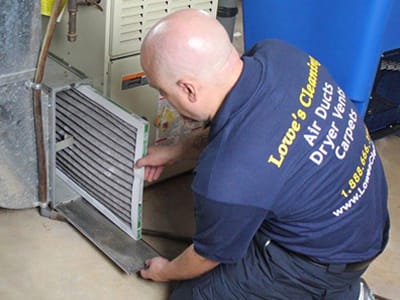
What Are AC Coils and Why Are They So Important?
According to the US Energy Department, “three-quarters of all homes in the United States have air conditioners. Air conditioners use about 6% of all the electricity produced in the United States, at an annual cost of about $29 billion to homeowners.” To save the environment and money, they recommend regular maintenance of our air conditioners.
In order to do so, we have to know some basic information about machines we use daily. Of course, that doesn’t mean that we have to be experts, but a few tips here and there won’t hurt. For example, one of the main parts of the air conditioners are coils.
Air conditioner’s coils are some of the most important parts of the system. These corkscrew-shaped devices ensure that heat stays out of your home.
There are two types of coils in an air conditioning system:
- evaporator coils – their job is to absorb the heat and humidity from the air in your space,
- condenser coils – they expel that heat from the inside to the outside of your building.
In order for the coils to transfer heat effectively, the surfaces need to be clean. Since the condenser coils are typically located outside, they are vulnerable. When the outside of the condenser coil is caked with dirt and grime, the heat gets trapped inside and can’t be effectively released. That leads to numerous negative effects, such as:
- Filthy coils are great environment for bacteria or fungi to grow, which can easily be blown into your home.
- Higher energy bills – when the coils are dirty, your system has to work harder and run longer trying to keep your space cool, so it has to use more electricity.
- More breakdowns – contaminated condenser coils can’t do their job properly, which could cause your air conditioner to malfunction or make its other components work too hard. That means that parts are wearing out faster.
- Shorter system life – dirty coils also get corroded which leads to refrigerant leaks or system overheating and the compressor failing.
- When the evaporator coil gets dirty, it can’t remove as much heat and humidity from the air in your space. The evaporator coil is located indoors, but it’s still exposed to all the dust in your building.
As a general rule, you need AC coil cleaning twice per year, as part of your regular preventative maintenance. But there are other factors, such as:
- The age and condition of your equipment – If your equipment is older, dirt will accumulate faster.
- Usage – Take into consideration how many hours per day is your AC running and what is the occupancy of the space. The higher the load – the more dirt the system will accumulate.
- Location – Think about what your coil is exposed to in your surroundings – if it is close to the street, where the pollution levels are higher, or if it is located near the construction site, factories or kitchens. Exhaust from the neighborhood affects your AC more than you thought.
If you can find your AC coil in some of these scenarios, that means you’ll need to clean it more often.
You don’t. There are numerous tutorials online, showing how to clean AC coil by yourself, but that is not easy as it looks, and, as a matter of fact, it can be quite dangerous. First of all, there is a risk of making a fire or suffering of electric shock if you’re not trained, not to mention harming yourself by not properly handling potentially dangerous chemicals. Secondly, coil fins are very sensitive and can be easily damaged, also they need special kinds of cleaning products. So, the safest thing to do is to call professionals.

